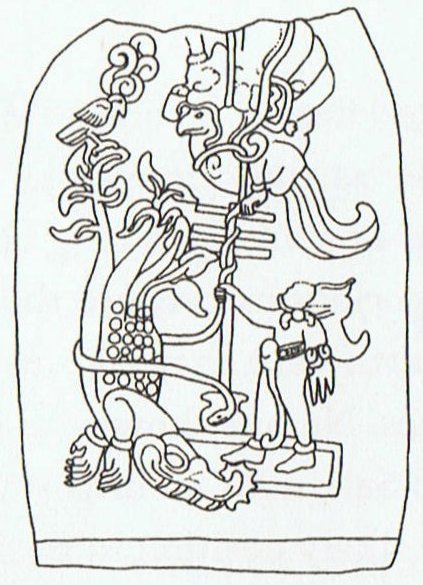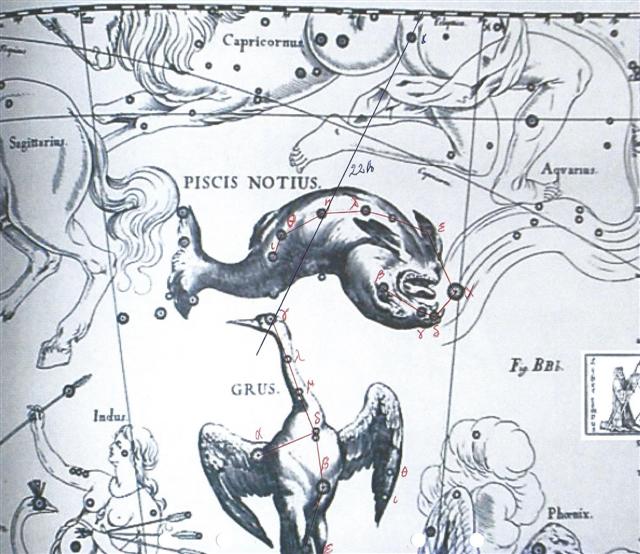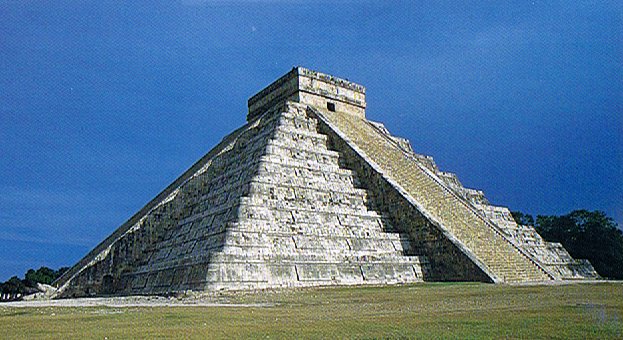The genesis of the Precious Vase
('calabash', 'gourd', hipu) may
have occurred 3 days earlier, viz .in August 13
(15 * 15):
"Had
Monseigneur Dordillon eaten his way to the
civic chair of London instead of coming to a
starveling preferment in the bishopric of a
savage diocese he would surely have defined
the nako
of the Marquesan turtle in terms of calipash
and calipee. Churchill."
 |
 |
 |
|
Ca6-4 |
Ca6-5 (145 = 15 * 15 - 80) |
Ca6-6 |
|
kua hau te haú o to hau tea |
kua hipu koia etoru hipu |
te
henua ma te rima |
|
Hipu.
Calabash, shell, cup, jug, goblet,
pot, plate, vase, bowl, any such
receptacle; hipu hiva, melon,
bottle; hipu takatore,
vessel; hipu unuvai, drinking
glass. P Mgv.: ipu, calabash,
gourd for carrying liquids. Mq.:
ipu, all sorts of small vases,
shell, bowl, receptacle, coconut
shell. Ta.: ipu, calabash,
cup, receptacle. Churchill.

... Then the big
Fish did swallow him, and he had
done acts worthy of blame. Had it
not been that he (repented and)
glorified Allah, He would certainly
have remained inside the Fish till
the Day of Resurrection. - Qur'an,
chapter 37 (As-Saaffat), verse
139–144. But We cast him forth on
the naked shore in a state of
sickness, And We caused to grow,
over him, a spreading plant of the
gourd kind. And We sent him (on a
mission) to a hundred thousand (men)
or more. And they believed; so We
permitted them to enjoy (their life)
for a while. - Qur'an, chapter 37
(As-Saaffat), verse 145–148 ...
... The state of
the tree loomed large in their
thoughts, because it came about at
the same time the head of One
Hunaphu was put in the fork. The
Xibalbans said among themselves: 'No
one is to pick the fruit, nor is
anyone to go beneath the tree', they
said. They restricted themselves,
all of Xibalba held back. It isn't
clear which is the head of One
Hunaphu; now it's exactly the same
as the fruit of the tree. Calabash
came to be its name, and much was
said about it. A maiden heard about
it, and here we shall tell of her
arrival ... |
|
CLOSE TO THE FULL MOON: |
|
DEC 9 (7 * 7 * 7) |
10 (344) |
11 |
|
Febr 11 (42 =
407 = 343 + 64)
A Hydrae (144.1)
VEGA (α Lyrae) |
UKDAH (Knot) =
ι
Hydrae
(145.4),
κ
Hydrae (145.5),
SUBRA =
ο
Leonis
(145.8)
*104.0 = *145.4 - *41.4
ALPHEKKA MERIDIANA |
Rishu A.-13 (Head of the Lion)
ψ Leonis (146.4),
RAS ELASET AUSTRALIS = ε Leonis
(146.6)
*105.0 = *146.4 - *41.4 |
|
CLOSE TO THE SUN: |
|
Itzam-Yeh
defeated |
28 May
(148), 3149 BC |
|
1st
3-stone place |
21 May
(141), 3114 BC |
|
Creation
of our present world |
13 August
(225), 3114 BC |
|
Och ta
chan (Hun-Nal-Ye
'entered or became the
sky') |
5
February (36), 3112 BC |
|
21 May,
3114 BC - 5 February,
3112 BC = 542 |
|
542
'happens to be' the sum
of 365 days and 6 * 29½
nights. |
|
... In
three magnificent texts
at the site of Koba,
scribes recorded it as
one of the largest
finite numbers we humans
have ever written.
According to these
inscriptions, our world
was created on the day
4 Ahaw 8 Kumk'u.
On this day all the
cycles of the Maya
calendar above twenty
years were set at
thirteen - that is to
say, the cycles of 400
years, 8,000 years,
160,000 years,
32,000,000 years, and so
on, all the way up to a
cycle number extending
to twenty places (2021
* 1360-day year).
In our
calendar, this day fell
on August 13, 3114 BC.
To understand what this
means, we need a little
scale. The thirteens in
this huge number act
like the twelve in our
cycles - the next hour
after twelve is one.
Thirteen changed to one
as each of these cycles
in the Maya calendar was
completed, therefore, we
have the following
sequence:
|
13. |
13. |
13. |
0. |
0. |
0. |
1. |
5 Imix |
9 Kumk'u |
(Aug. 14,
3114 B.C.) |
|
13. |
13. |
13. |
0. |
0. |
1. |
0. |
11 Ahaw |
3 Pop |
(Sept. 2,
3114 B.C.) |
|
13. |
13. |
13. |
0. |
1. |
0. |
0. |
13 Ahaw |
3 Kumk'u |
(Aug.7, 3113
B.C.) |
|
13. |
13. |
13. |
1. |
0. |
0. |
0. |
2 Ahaw |
8 Mak |
(May 1, 3094
B.C.) |
|
13. |
13. |
1. |
0. |
0. |
0. |
0. |
3 Ahaw |
13 Ch'en |
(Nov. 15,
2720 B.C.) |
|
13. |
13. |
13. |
0. |
0. |
0. |
0. |
4 Ahaw |
3 K'ank'in |
(Dec. 23,
A.D. 2012) |
|
13. |
1. |
0. |
0. |
0. |
0. |
0. |
10 Ahaw |
13 Yaxk'in |
(Oct. 15,
A.D. 4772) |
|
1. |
0. |
0. |
0. |
0. |
0. |
0. |
7 Ahaw |
3 Zotz' |
(Nov. 22,
A.D. 154587) |
|

... This pot depicts one of the Hero
Twins (One-Ahaw in the Classic texts
and One-Hunaphu in the K'iche' Popol
Vuh) and a great bird who is trying
to land in a huge ceiba tree heavy
with fruit. This mythical bird is
Itzam-Yeh, Classic prototype of
Wuqub-Kaqix, 'Seven-Macaw',
of Popol Vuh fame. In that story, in
the time before the sky was lifted
up to make room for the light, the
vainglorious Seven-Macaw imagined
himself to be the sun. Offended by
his pride, the Hero Twins humbled
him by breaking his beautiful
shining tooth with a pellet from
their blowgun. This pot shows
One-Ahaw aiming at the bird as he
swoops down to land in his tree. As
Itzam-Yeh lands on his perch,
the text tells us he is 'entering or
becoming the sky'.
This particular 'sky-entering' is
not the one mentioned in the
Palenque text. It is the final event
that occurred in the previous
creation before the universe was
remade. Before the sky could be
raised and the real sun revealed in
all its splendor, the Hero Twins had
to put the false sun, Itzam-Yeh,
in his place. If the date on this
pot corresponds to that
pre-Columbian event, as we believe
it does, then Itzam-Yeh was
defeated on 12.18.4.5.0.1 Ahaw
3 K'ank'in (May 28, 3149
B.C.). After the new universe was
finally brought into existence,
First Father also entered the sky by
landing in the tree, just as
Itzam-Yeh did ...
Itzam-Yeh was
a name for Ursa Major:

 |
|
JUNE 9 |
10 (161) |
11 |
|
Aug 12 (224) |
Creation of our present world |
5 Imix 9 Kumk'u |
|
CASTRA = ε Capricorni
(327.2),
BUNDA = ξ Aquarii
(327.5)
SIRIUS (α Canis Majoris) |
Mahar sha hi-na
Shahū-26 (Western One in the Tail of
the Goat)
NASHIRA
=
γ
Capricorni
(328.0),
ν
Oct. (328.3), AZELFAFAGE
=
π¹
Cygni,
κ
Capricorni (328.7) |
Arkat sha hi-na
Shahū-27 (Eastern One in the Tail of
the Goat)
ENIF (The Nose) =
ε
Pegasi, ERAKIS =
μ
Cephei
(329.2),
46 CAPRICORNI,
JIH (the Sun)
=
κ
Pegasi
(329.3),
ι
Piscis Austrini (329.4),
λ
Capricorni (329.6),
ν
Cephei (329.7),
DENEB ALGIEDI =
δ
Capricorni
(329.8)
*288.0 = *329.4 - *41.4 |
 |
 |
 |
 |
 |
|
Ca6-7 (132 + 15) |
Ca6-8 (148 = 228 - 80) |
Ca6-9 |
Ca6-10 |
|
etoru kiore |
te henua te rima |
|
... In China,
with Capricornus, Pisces, and a
part of Sagittarius, it
[Aquarius] constituted the early
Serpent, or Turtle, Tien Yuen;
and later was known as Hiuen
Ying, the Dark Warrior and
Hero, or Darkly Flourishing One,
the Hiuen Wu, or Hiuen
Heaou, of the Han dynasty,
which Dupuis gave as Hiven
Mao. It was a symbol of the
emperor Tchoun Hin, in
whose reign was a great deluge;
but after the Jesuits came in it
became Paou Ping, the
Precious Vase. It contained
three of the sieu, and headed
the list of zodiac signs as the
Rat, which in the far
East was the ideograph for
'water', and still so remains in
the almanacs of Central Asia,
Cochin China, and Japan ...
Kiore.
Rat. Vanaga. Rat, mouse;
kiore hiva, rabbit. P Pau.,
Mgv.: kiore, rat, mouse.
Mq.: kioē,
íoé,
id. Ta.: iore,
id. Churchill.

... The Moon rabbit in
folklore is a rabbit that lives
on the moon ... The story exists
in many cultures, particularly
in Aztec mythology and East
Asian folklore, where it is seen
pounding in a mortar and pestle.
|
JUNE 17 (168) |
|
 |
|
PESTLE |
|
REGULUS |
In Chinese folklore, it is often
portrayed as a companion of the
moon goddess Chang'e, constantly
pounding the elixir of life for
her; but in Japanese and Korean
versions, it is just pounding
the ingredients for rice cake
... |
|
CLOSE TO THE FULL MOON: |
|
DEC 12 |
LUCIA |
14 |
15 (349 = 14 * 29½ - 64) |
|
Febr 14 (45 = 227 - 182)
θ Piscis Austrini (330.1), λ
Oct. (330.7)
All Hearts' Day |
15 (46 = 411)
KUH (Weeping) = μ Capricorni
(331.4),
γ
Gruis (331.5)
*290.0 = *331.4 - *41.4 |
16 (229 + 183)
No star listed (332) |
17 (14 * 29½)
η
Piscis Austrini (333.4)
*292.0 = *333.4 - *41.4 |
If the beginning of the C text was designed (as I have suggested) to be where Algenib Pegasi (*1) was at the Full Moon in September 22 (264 = 81 + 183) - according to my assumed epoch of rongorongo - then the position 147 days (glyphs) later should be when Kuh (264 + 147 - 80 = *331) was at the Full Moon.
|
 |
|
CLOSE TO THE SUN: |
|
JUNE 12 (163) |
13 (347 - 183 = 228 - 64) |
14 (165) |
15 |
|
Aug 15 (227) |
16 (187 + 41) |
17 (229) |
18
(150 + 80) |
|
VATHORZ PRIOR = υ Carinae
(147.9) |
υ¹ Hydrae (148.4),
RAS
ELASET BOREALIS (Northern Head
of the Lion)
=
μ
Leonis
(148.7)
*107.0 = *148.4 - *41.4 |
TSEEN KE (Heaven's Record)
=
φ
Velorum
(149.9) |
ν Leonis (150.1), π Leonis
(150.6) |
|
Thus, in August
16 (227 + 1 = 80 + 148) these 3
sitting 'rats' would have been
visible close to the Full Moon.
And according to the epoch of
Bharani their position would
have been in day 228 - 41 = 187
("July 6) = *107 (= 472 - 365 =
41 + 66).
The stars could
not be observed when they were
close to the Sun and therefore
the nakshatra stars must be
observed instead. These should
therefore be illustrated in the
rongorongo text rather than
those stars which were hidden by
the fierce rays from the Sun.
|
CLOSE
TO THE FULL MOON: |
|
DEC 16 (350 = 80 +
270) |
|
 |
 |
|
Gb2-15 (270) |
Ca6-11 (151) |
|
Febr 18 (414 = 350 +
64) |
|
SADALMELIK (22h) |
|
CLOSE TO THE SUN: |
|
JUNE 17 (168 = 350 -
182) |
|
Aug 20 (232 = 414 -
182) |
|
REGULUS
(10h) |
|
... and then, with
stunning abruptness, at a crucial date
that can be almost precisely fixed at
3200 BC (in the period of the
archaeological stratum known as Uruk B),
there appears in this little Sumerian
mud garden - as though the flowers of
its tiny cities were suddenly bursting
into bloom - the whole cultural syndrome
that has since constituted the germinal
unit of all the high civilization of the
world.
And we cannot attribute
this event to any achievement of the
mentality of simple peasants. Nor was it the
mechanical consequence of a simple piling up
of material artifacts, economically
determined. It was actually and clearly the
highly conscious creation (this much can be
asserted with complete assurance) of the
mind and science of a new order of humanity,
which had never before appeared in the
history of mankind; namely, the
professional, full-time, initiated, strictly
regimented temple priest.
The new inspiration of
civilized life was based, first, on the
discovery, through long and meticulous,
carefully checked and rechecked
observations, that there were, besides the
sun and moon, five other visible or barely
visible heavenly spheres (to wit, Mercury,
Venus, Mars, Jupiter, and Saturn) which
moved in established courses, according to
established laws, along the ways followed by
the sun and moon, among the fixed stars; and
then, second, on the almost insane, playful,
yet potentially terrible notion that the
laws governing the movements of the seven
heavenly spheres should in some mystical way
be the same as those governing the life and
thought of men on earth.
The whole city, not
simply the temple area, was now conceived as
an imitation on earth of the cosmic order, a
sociological 'middle cosmos', or
mesocosm, established by
priestcraft between the macrocosm of the
universe and the microcosm of the
individual, making visible the one essential
form of all. The king was the center, as a
human representative of the power made
celestially manifest either in the sun or
the moon, according to the focus of the
local cult; the walled city was organized
architecturally in the design of a quartered
circle (like the circles designed on the
ceramic ware of the period just preceeding),
centered around the pivotal sanctum of the
palace or ziggurat (as the ceramic designs
around the cross, rosette, or swastika); and
there was a mathematically structured
calendar to regulate the seasons of the
city's life according to the passages of the
sun and moon among the stars - as well as a
highly developed system of liturgical arts,
including music, the art rendering audible
to human ears the world-ordering harmony of
the celestial spheres.
It was at this moment in
human destiny that the art of writing first
appeared in the world and that scriptorially
documented history therefore begins. Also,
the wheel appeared. And we have evidence of
the development of the two numerical systems
still normally employed throughout
the civilized world, the
decimal and the sexigesimal; the former was
used mostly for business accounts in the
offices of the temple compounds, where the
grain was stored that had been collected as
taxes, and the latter for the ritualistic
measuring of space and time as well. Three
hundred and sixty degrees, then as now,
represented the circumference of a circle -
the cycle of the horizon - while three
hundred and sixty days, plus five, marked
the measurement of the circle of the year,
the cycle of time. The five intercalated
days that bring the total to three hundred
and sixty-five were taken to represent a
sacred opening through which spiritual
energy flowed into the round of the temporal
universe from the pleroma of eternity, and
they were designated, consequently, days of
holy feast and festival.
Comparably, the ziggurat,
the pivotal point in the center of the
sacred circle of space, where the earthly
and heavenly powers joined, was also
characterized by the number five; for the
four sides of the tower, oriented to the
points of the compass, came together at the
summit, the fifth point, and it was there
that the energy of heaven met the earth.
The early Sumerian temple
tower with the hieratically organized little
city surrounding it, where everyone played
his role according to the rules of a
celestially inspired divine game, supplied
the model of paradise that we find,
centuries later, in the Hindu-Buddhist
imagery of the world mountain, Sumeru, whose
jeweled slopes, facing the four directions,
peopled on the west by sacred serpents, on
the south by gnomes, on the north by earth
giants, and on the east by divine musicians,
rose from the mid-point of the earth as the
vertical axis of the egg-shaped universe,
and bore on its quadrangular summit the
palatial mansions of the deathless gods,
whose towered city was known as Amaravati,
'The Town Immortal'. But it was the model
also of the Greek Olympus, the Aztec temples
of the sun, and Dante's holy mountain of
Purgatory, bearing on its summit the Earthly
Paradise.
For the form and concept
of the City of God conceived as a
'mesochosm' (an earthly imitation of the
celestial order of the macrocosm) which
emerged on the threshold of history circa
3200 BC, at precisely that geographical
point where the rivers of Tigris and
Euphrates reach the Persian Gulf, was
disseminated eastward and westward along the
ways already blazed by the earlier
neolithic. The wonderful life-organizing
assemblage of ideas and principles -
including those of kingship, writing,
mathematics, and calendrical astronomy -
reached the Nile, circa 2800 BC; it spread
to Crete on the one hand, and on the other,
to the valley of the Indus, circa 2600 BC;
to Shang China, circa 1600 BC; and,
according to at least one
high authority, Dr Robert Heine-Geldern,
from China across the Pacific, during the
prosperous seafaring period of the late Chou
Dynasty, between the seventh and fourth
centuries BC, to Peru and Middle America ...

|














